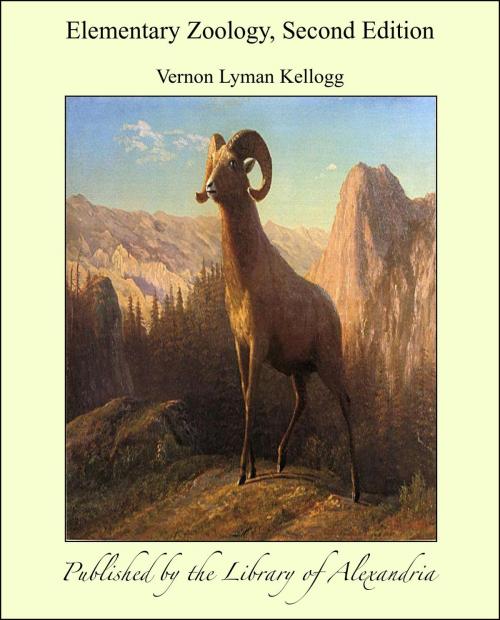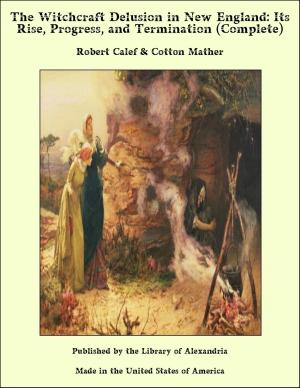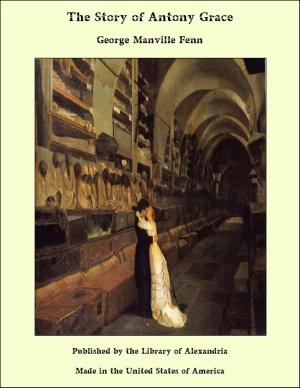Elementary Zoology, Second Edition
Nonfiction, Religion & Spirituality, New Age, History, Fiction & Literature| Author: | Vernon Lyman Kellogg | ISBN: | 9781465572370 |
| Publisher: | Library of Alexandria | Publication: | March 8, 2015 |
| Imprint: | Language: | English |
| Author: | Vernon Lyman Kellogg |
| ISBN: | 9781465572370 |
| Publisher: | Library of Alexandria |
| Publication: | March 8, 2015 |
| Imprint: | |
| Language: | English |
It seems to the author that three kinds of work should be included in the elementary study of zoology. These three kinds are: (a) observations in the field covering the habits and behavior of animals and their relations to their physical surroundings, to plants, and to each other; (b) work in the laboratory, consisting of the study of animal structure by dissection and the observation of live specimens in cages and aquaria; and (c) work in the recitation- or lecture-room, where the significance and general application of the observed facts are considered and some of the elementary facts relating to the classification and distribution of animals are learned. These three kinds of work are represented in the course of study outlined in this book. The sequence and extent of the study in laboratory and recitation-room are definitely set forth, but the references to field-work consist chiefly of suggestions to teacher and student regarding the character of the work and the opportunities for it. Not because the author would give to the field-work the least important place,—he would not,—but because of the utter impracticability of attempting to direct the field-work of students scattered widely over the United States. The differences in season and natural conditions in various parts of the country with the corresponding differences in the "seasons" and course of the life-history of the animals of the various regions make it impossible to include in a book intended for general use specific directions for field-work. Further, the amount of time for field-work at the disposal of teacher and class and the opportunities afforded by the topographic character of the region in which the schools are located vary much. The initiation and direction of this must therefore always depend on the teacher. On the other hand, the work of the other two phases of study can to a large extent be made pretty uniform throughout the country. For dissection, specimens properly killed and preserved are about as good as fresh material, and by modifying the suggested sequence of work a little to suit special conditions or conveniences, the examination of live specimens in the laboratory can in most cases be accomplished. The author believes that elementary zoological study should not be limited to the examination of the structure of several types. The student should learn by observation something of the functions of animals and something of their life-history and habits, and should be given a glimpse of the significance of his particular observations and of their general relation to animal life as a whole. The drill of the laboratory is perhaps the most valuable part of the work, but as a matter of fact the high school is trying to teach elementary zoology, an elementary knowledge of animals and their life, and dissection alone cannot give the pupil this knowledge. On the other hand, without a personal acquaintance with animals, based on careful actual observations of their life-history and habits and on the study of the structural characters of the animal body by personally made dissections, the pupil can never really appreciate and understand the life of animals. Reading and recitation alone can never give the student any real knowledge of it. The book is divided into three parts, of which Part I should be[1] first undertaken. This is an introduction to an elementary knowledge of animal structure, function, and development. It consists of practical exercises in the laboratory, each followed by a recitation in which the significance of the facts already observed is pointed out. The general principles of zoology are thus defined on a basis of observed facts
It seems to the author that three kinds of work should be included in the elementary study of zoology. These three kinds are: (a) observations in the field covering the habits and behavior of animals and their relations to their physical surroundings, to plants, and to each other; (b) work in the laboratory, consisting of the study of animal structure by dissection and the observation of live specimens in cages and aquaria; and (c) work in the recitation- or lecture-room, where the significance and general application of the observed facts are considered and some of the elementary facts relating to the classification and distribution of animals are learned. These three kinds of work are represented in the course of study outlined in this book. The sequence and extent of the study in laboratory and recitation-room are definitely set forth, but the references to field-work consist chiefly of suggestions to teacher and student regarding the character of the work and the opportunities for it. Not because the author would give to the field-work the least important place,—he would not,—but because of the utter impracticability of attempting to direct the field-work of students scattered widely over the United States. The differences in season and natural conditions in various parts of the country with the corresponding differences in the "seasons" and course of the life-history of the animals of the various regions make it impossible to include in a book intended for general use specific directions for field-work. Further, the amount of time for field-work at the disposal of teacher and class and the opportunities afforded by the topographic character of the region in which the schools are located vary much. The initiation and direction of this must therefore always depend on the teacher. On the other hand, the work of the other two phases of study can to a large extent be made pretty uniform throughout the country. For dissection, specimens properly killed and preserved are about as good as fresh material, and by modifying the suggested sequence of work a little to suit special conditions or conveniences, the examination of live specimens in the laboratory can in most cases be accomplished. The author believes that elementary zoological study should not be limited to the examination of the structure of several types. The student should learn by observation something of the functions of animals and something of their life-history and habits, and should be given a glimpse of the significance of his particular observations and of their general relation to animal life as a whole. The drill of the laboratory is perhaps the most valuable part of the work, but as a matter of fact the high school is trying to teach elementary zoology, an elementary knowledge of animals and their life, and dissection alone cannot give the pupil this knowledge. On the other hand, without a personal acquaintance with animals, based on careful actual observations of their life-history and habits and on the study of the structural characters of the animal body by personally made dissections, the pupil can never really appreciate and understand the life of animals. Reading and recitation alone can never give the student any real knowledge of it. The book is divided into three parts, of which Part I should be[1] first undertaken. This is an introduction to an elementary knowledge of animal structure, function, and development. It consists of practical exercises in the laboratory, each followed by a recitation in which the significance of the facts already observed is pointed out. The general principles of zoology are thus defined on a basis of observed facts















